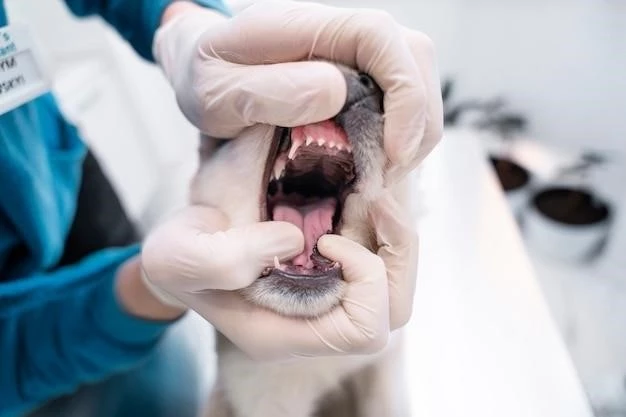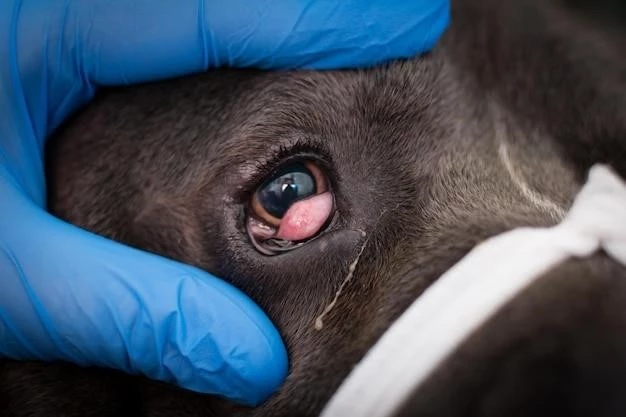Introduction
Radiculomegaly of canine teeth and congenital cataracts are rare conditions often associated with unique dental and visual characteristics. This article explores these intriguing syndromes.
Overview of Radiculomegaly of Canine Teeth and Congenital Cataract
Radiculomegaly in canine teeth and congenital cataracts often present together, indicating a potential underlying syndrome with distinct dental and visual anomalies. These conditions, while rare, have been reported in medical literature, emphasizing the importance of understanding their association and potential implications for diagnosis and treatment.
The presence of facial dismorphology, congenital cataracts, and dental radiculomegaly is a unique combination that may suggest a specific syndrome. Studies have highlighted the rarity of these co-occurring conditions, underscoring the need for further research to elucidate the underlying etiology and implications for clinical management.
Notably, the association of radiculomegaly, congenital cataracts, and other systemic features like heart disease in certain individuals raises questions about the potential syndromic nature of these conditions. Understanding the prevalence and diagnostic criteria for this syndrome is crucial for accurate diagnosis and appropriate interventions.
Clinical Presentation
The clinical presentation of radiculomegaly of canine teeth and congenital cataract often involves a combination of facial dysmorphology, dental anomalies, and ophthalmic manifestations. These distinct features may indicate an underlying syndrome with systemic implications, emphasizing the importance of thorough evaluation and accurate diagnosis.
Facial Dismorphology and Dental Anomalies
The unique combination of facial dysmorphism, congenital cataracts, microphthalmia, heart disease, and radiculomegaly in canine and incisor teeth presents a rare and distinct syndrome. The presence of these anomalies underscores the need for thorough clinical assessment and potential syndromic diagnosis, highlighting the importance of recognizing and understanding this complex condition for appropriate management.
Studies have reported cases of canine radiculomegaly associated with congenital cataracts, emphasizing the rarity and potential syndromic nature of these conditions. The occurrence of radiculomegaly in specific teeth, particularly canines, and its correlation with congenital cataracts raise intriguing questions about the underlying etiology and diagnostic criteria for this unique syndrome.
Notably, the diagnostic criteria for Oculo-Facio-Cardio-Dental (OFCD) syndrome include extreme elongation of canine roots, further emphasizing the significance of dental abnormalities in identifying this rare genetic disorder. The association of radiculomegaly, congenital cataracts, facial dysmorphism, and heart disease in individuals highlights the need for comprehensive evaluation and specialized dental care for patients presenting with these complex manifestations.
Etiology
The etiology of radiculomegaly of canine teeth and congenital cataracts remains complex, potentially involving genetic factors that manifest in the unique combination of dental and visual abnormalities observed in affected individuals. Understanding the underlying genetic mechanisms and pathways associated with these conditions is crucial for advancing diagnostic capabilities and developing targeted treatment strategies.
Association with Oculo-Facio-Cardio-Dental Syndrome
The association of radiculomegaly of canine teeth and congenital cataracts with Oculo-Facio-Cardio-Dental (OFCD) syndrome is a rare occurrence. This X-linked dominant syndrome presents with distinctive features such as enlarged roots of canines, facial dysmorphia, congenital heart disease, and ocular anomalies. Recognizing the signs of OFCD syndrome, especially the extreme elongation of canine roots, is crucial for accurate diagnosis and appropriate clinical management of affected individuals.

Diagnosis
Diagnosing radiculomegaly of canine teeth and congenital cataracts involves comprehensive clinical assessments, dental evaluations, and ophthalmic examinations to identify the characteristic features associated with these rare conditions. Recognizing the distinct facial dysmorphology, dental anomalies, and visual abnormalities is crucial for accurate diagnosis and appropriate management of individuals presenting with this unique syndrome.
Diagnostic Criteria for OFCD Syndrome
The diagnostic criteria for Oculo-Facio-Cardio-Dental (OFCD) syndrome include characteristic features such as radiculomegaly of canine teeth, congenital cataracts, dysmorphic facial appearance, and congenital heart defects. These distinct clinical manifestations, particularly extreme elongation of canine roots, serve as key indicators for identifying individuals with OFCD syndrome. Understanding and recognizing these diagnostic criteria are essential for accurate diagnosis and appropriate management of this rare genetic disorder.
Prevalence
The prevalence of radiculomegaly of canine teeth and congenital cataracts is extremely rare, with documented cases highlighting the unique nature of this syndrome and the challenges it poses in diagnosis and treatment. The infrequent occurrence of this condition underscores the importance of heightened awareness among healthcare providers to prevent misdiagnosis and ensure appropriate care for affected individuals.
Rarity and Misdiagnosis Challenges
The rarity of radiculomegaly of canine teeth and congenital cataracts presents significant challenges in diagnosis and clinical management. Clinicians may face difficulties in identifying this rare syndrome due to the complex interplay of dental and visual anomalies. Misdiagnosis can occur, especially in cases where only one or two systems are involved, highlighting the importance of heightened awareness among healthcare providers. The scarcity of reported cases emphasizes the need for increased knowledge and vigilance to ensure accurate recognition and appropriate care for individuals with this unique condition.
Treatment
Treatment for radiculomegaly of canine teeth and congenital cataracts may involve dental interventions, surgical procedures, and ophthalmic treatments tailored to address the specific challenges presented by these rare conditions. Customized management plans focusing on dental care and visual health are essential for improving outcomes and ensuring the overall well-being of affected individuals.
Dental Management and Surgical Interventions
The treatment approach for radiculomegaly of canine teeth and congenital cataracts typically involves a combination of dental management and surgical interventions. Dental care may include interventions to address radiculomegaly, such as root canal treatments or extractions. In cases where congenital cataracts are present, surgical procedures to remove the affected lens and restore vision may be necessary. The coordination between dental professionals and ophthalmologists is crucial to ensure comprehensive care addressing both the dental and visual aspects of these conditions. Tailored treatment plans focusing on both dental and ocular health are essential for improved outcomes and quality of life for individuals with this complex syndrome.
Case Studies
Reported cases of radiculomegaly in canine teeth and congenital cataracts highlight the unique challenges and complexities associated with this rare syndrome.
Reported Cases of Radiculomegaly in Canine Teeth
The literature has documented rare cases of radiculomegaly in both incisor and canine teeth, often associated with congenital cataracts. The presence of open apices in these affected teeth, along with other dental crown anomalies, highlights the uniqueness of this syndrome. Recognizing these specific dental abnormalities is crucial for accurate diagnosis and appropriate treatment planning for individuals presenting with this rare condition.
Prognosis
Long-term outcomes and follow-up care for individuals with radiculomegaly of canine teeth and congenital cataracts vary based on the severity of symptoms and the effectiveness of the treatment interventions. Regular monitoring and specialized dental and ophthalmic care are essential for managing this unique syndrome and ensuring optimal quality of life for affected individuals.
Long-Term Outcomes and Follow-Up Care
Long-term outcomes and follow-up care for individuals with radiculomegaly of canine teeth and congenital cataracts require regular monitoring by both dental and ophthalmic specialists. The prognosis varies based on the severity of the condition and the effectiveness of treatment. Comprehensive care plans focusing on dental and visual health are essential for managing this rare syndrome and ensuring the overall well-being of affected individuals.
Research and Publications
Studies on radiculomegaly of canine teeth and congenital cataracts have been reported, highlighting the clinical manifestations and possible syndromic nature of this rare condition.
Studies on Radiculomegaly and Congenital Cataracts
Past studies have confirmed the association of radiculomegaly in canine teeth with congenital cataracts, highlighting a potential syndromic condition that manifests in unique dental and visual abnormalities. The recognition of this rare syndrome is crucial for accurate diagnosis and appropriate management, necessitating continued research to elucidate the underlying genetic and clinical implications of this complex presentation.

Identifying the unique features of radiculomegaly of canine teeth and congenital cataracts is crucial for accurate diagnosis and specialized care to manage this rare and complex syndrome.
Summary of Key Findings and Future Directions
Research on radiculomegaly of canine teeth and congenital cataracts confirms a rare syndrome presenting with distinct dental and visual abnormalities. Future investigations aim to uncover the genetic and clinical aspects of this complex condition to enhance diagnostic accuracy and provide tailored treatment strategies for affected individuals.
